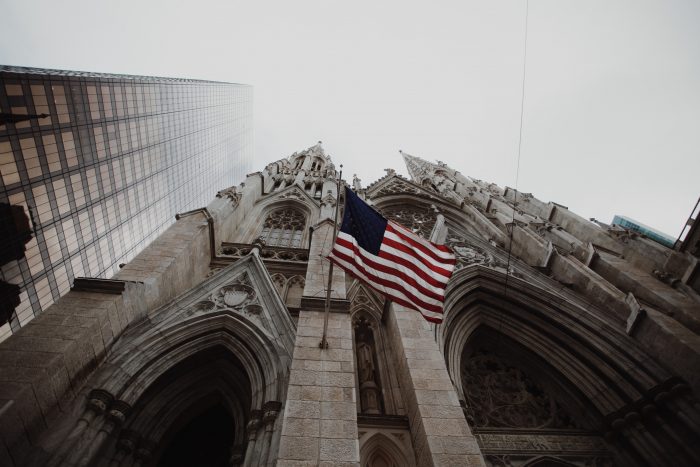“Violence is a tragic expression of unmet needs.”
~Marshall Rosenberg, founder of Nonviolent Communication.
I was talking recently with a young white man who has a wonderful project in which white people pledge monthly support to projects for people of African or Indigenous descent. We were talking about the “racists” in our lives, and I stressed the importance of staying close to them.
He asked,
“But how do I show up to that kind of attitude? What do I say?”
I paused.
“You already know the answer to that,” I said.
He paused.
“Yeah, I guess I do.”
We talked about the skills he already had for connecting compassionately with the other white people in his circles who held different beliefs. After the storming of the Capitol within 24 hours of this writing, the need for that kind of compassionate inquiry seems like it’s reached epic proportions.
This isn’t the first time in history that we’ve had social unrest, widespread gaslighting, and threats of violence. But it’s the first time we’ve had emotionally evolved resources to address these phenomena at their psychic roots. If we’d had those resources in earlier decades and centuries, we might have been spared white supremacist genocide at crucial junctures in history.
For example, what if Adolf Hitler had had a skilled companion sit with him until he poured his heart out about the pain he was in, until he no longer saw the murder of six million Jews as a solution to that pain? By my calculations, I would have about 18 more Jewish cousins of my generation, who in turn would have 30 or so children, who would now be having grandchildren. Multiply that by six million survivors.
Or what if European “settlers” had relentless compassion shamans follow them around inquiring about their views of Indigenous people as “savages” whom it was okay to displace, harm, enslave, infect with disease, and murder—until the Europeans were able to see their common humanity with those Indigenous people, and instead of slaughter and displace them, respect and learn from their ways of life? Imagine the radically different harmonious landscape we might see around us today, and how it would be different from what’s currently here. The wildly creative permaculture projects we see on YouTube might be widespread. Solar, wind, and ocean wave energy might be the norm. We’d all be breathing better air.
Or try this one on: Imagine that compassionate-yet-firm challengers blocked the leaders who organized the kidnapping of Africans to enslave them. Imagine that those challengers had confronted those intending to kidnap and enslave Africans with pointed questions: What do you really need? What are you hoping to achieve through these strategies? What if those compassionate-yet-firm challengers were able to sit with the would-be kidnappers until those main actors in this horrific chapter of our history were able to find other solutions to their economic plans that did not involve enslavement of Africans? In that case, the only people of African descent here in the U.S. would be here by choice. We would not have the police, who were formed to arrest and incarcerate freed slaves.
In each of these instances of white supremacy, ideology-fueled genocide, and harm, the authors of the acts that created and maintained the harm had attached themselves to their violent strategies and carried them out without any effective blockage. “Manifest Destiny” was spoken as if it were simple truth—white people were “destined” to occupy the Indigenous land now known as the United States of America. White supremacy was—and is—the largely unspoken and unchallenged ideology that supports this notion, and confers preferential treatment on light-skinned people of European descent—whether we want it or not.
In each of those historical instances, we didn’t know then what we know now. We didn’t know that inside every “criminal” is a set of feelings, needs, and stories that, if fully listened to, could plausibly result in different, non-harmful choices. We now have evidence that restorative justice typically outperforms traditional retributive (punitive) justice in reducing recidivism rates. Restorative justice provides opportunities for those who commit harmful acts to connect with those they have harmed and learn firsthand about the impact. It’s inherently humanizing and references the internal states of both the author and the recipient of a given act.
Now that we know this, we can decide to get close—relentlessly and lovingly close—to those in nearest proximity to us who seem to be getting attached to strategies that could be harmful. In other words, the same people from whom we most want to distance ourselves. Yes, “those” people. We need to keep inquiring about how they’re feeling and what they’re needing, so that they can feel the spaciousness that comes with self and other-acceptance, and make more conscious choices about the strategies they choose. And yes, we need practice in doing this.
We don’t typically witness or use this kind of internally-referenced inquiry and dialogue. We typically witness—and practice—arguing over what’s “right” and “wrong.” This usually puts people on the defensive and doesn’t engender true transformation. I want to see us using those skills of compassionate inquiry that prompt spontaneous and voluntary reflection and re-evaluation, and the release of attachment to violent strategies.
Often, this happens by hanging out with someone over an extended period of time. For example, Daryl Davis, a Black man, hung out with Klan members. To date, more than 200 of them have left the KKK as a result. Jacob Holdt befriended and visited the homes of a southern town’s KKK leaders, and found that to a person, all lived in squalid conditions, and were suffering terribly from unhealed effects of sexual abuse. Shannon Foley Martinez, a former neo-Nazi, spends time connecting with white nationalists, sharing her own journey and learning about theirs, to help them see other possibilities.
For our own practices, it might help to use a trick that poet Alison Luterman taught me, which is to think of the adults around us as big children, still stumbling toward what they want with imperfect skill. They may not truly want in their heart of hearts to hurt those on the other side of the playground, but they do need to feel better about themselves. So they do what they know how to do—and what they’re acculturated and egged on to do: Lash out in unexamined rage at their perceived enemy, in full-tilt bully mode. It’s the American way.
I’m calling on you, fellow white, seeker of consciousness who wants to push away the stormers of the Capitol. Who do you know in your family or friendship circle who’s angry and wants blood? Who’s making your jaw twitch and your stomach turn?
That’s exactly who needs your compassionate inquiry right now.
We get to decide how to respond. Violence has never transformed violence—it’s only multiplied it. Nor, of course, has ignoring violence ever helped. We have a unique opportunity in this historical moment to match people with compassionate inquiry skills with those who are acting out, or threatening to act out, their attachment to violent strategies, and at least attempt to engage them in transformative conversations. We’ve never had the awareness and level of skill that we have today to address such violent tendencies. If we fail to do so right now, harmful or even fatal consequences could unfold from this current trajectory.
So please—let’s dredge up the skills I know some of you know you have. If someone offered you ten million dollars to muster the compassion of an angel for someone whose espoused strategies repulse you, I bet you every one of those dollars that you could do it. I believe we all have the capacity to channel the most compassionate person we know, to lean in like Mother f*cking Theresa or whomever, and say, “Hey, what’s going on that’s causing you to feel this way?”
And then really listen…without judgment.
Perhaps the person who cracks and turns in their Klan robes or puts away their Confederate flag will be the one who would have led the next movement toward harm or fatalities. Or the one who decides not to shoot someone we love. We don’t know.
What I do know is that enough of us have evolved to a point where we can decide to make a difference—if we so choose. I also know that we can learn and practice these skills together. None of us needs to go this alone.
However, most of the white people I know right now are turning and running in the opposite direction—away from those who seem attached to dangerous or violent strategies. This leaves those most vulnerable, the least white among us, in the greatest danger.
If we’re serious about using our white privilege, let’s trot out those great listening skills we gleaned from those hundreds of workshop hours we spent thousands of dollars on. Because now would be, oh, let’s say, the most urgently optimal time we’ve seen in our lifetimes to use them.
If I’m honest and transparent about this, stepping up to this challenge is just about the hardest thing I’ve ever done. I desperately want to distance myself from the “other white people” who seem like “the problem.”
However, that’s dissociation. Dissociation is not transformation. Dissociation doesn’t help. It’s yet another expression of my white privilege. I get to dissociate when and however I wish. People of African, Asian, Latino/a/x and Indigenous descent are not so lucky, as respite from oppression is never guaranteed when you’re darker than white.
So, if I really want to acknowledge—and use—my white privilege to mitigate any additional harm that yesterday’s white Capitol storm might provoke, I need to put on my big girl, conscious-and-already-evolved pants, and use those skills I’ve been learning all these years to help prevent any additional white violence perpetrated by my tragically misguided white brothers and sisters.
If you feel so inspired, join me. Let’s practice together.


 Share on bsky
Share on bsky





Read 6 comments and reply